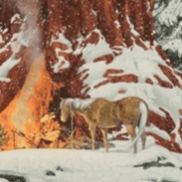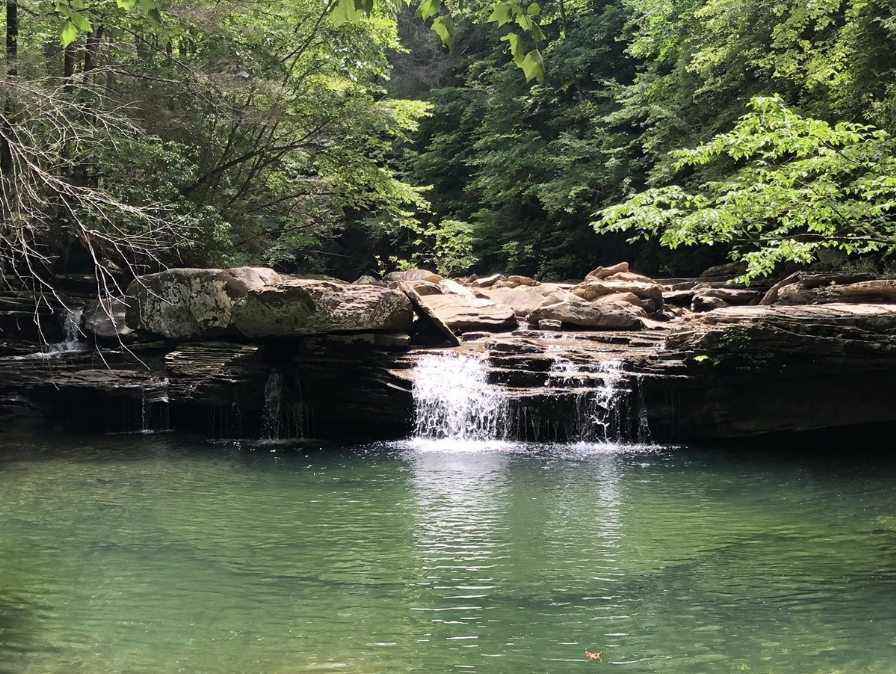-
Posts
5,791 -
Joined
-
Last visited
Content Type
Profiles
Blogs
Forums
American Weather
Media Demo
Store
Gallery
Everything posted by Holston_River_Rambler
-

TN valley heavy rain/flooding week of whenever
Holston_River_Rambler replied to janetjanet998's topic in Tennessee Valley
Thankfully Euro shows only one more (admittedly long-lived) system to endure after this one before we get a break. Unfortunately it also shows a general 5-6" with a dollop of 8" inches over central/ western TN and central KY in an axis running from around N. MS to Jackson KY. -

TN valley heavy rain/flooding week of whenever
Holston_River_Rambler replied to janetjanet998's topic in Tennessee Valley
No sleet for me in Knoxville, but huge, fat rain drops with the leading edge. Some culvert near a local market already gushing water after maybe 20 minutes of this. Hoping for a clap or two of thunder tonight. -

TN valley heavy rain/flooding week of whenever
Holston_River_Rambler replied to janetjanet998's topic in Tennessee Valley
Euro a little more optimistic for East TN this morning with a widespread 3 - 4" over the next 10 days. 5 - 7" (isolated 8) for areas west of the Cumberland plateau, so still not so good for the overall watershed. Fortunately 10"+ amounts no longer showing up, but I guess some of that from several days ago has already fallen. -

TN valley heavy rain/flooding week of whenever
Holston_River_Rambler replied to janetjanet998's topic in Tennessee Valley
I feel like the RGEM did pretty well with the last slug of moisture and it looks quite a bit more widespread that the NAM this AM. Interestingly though, if it is right with the precip maximum, that would be a better place for it since there is a mini divide there. All water does go to the Gulf, but there it flows straight in from AL, instead of going through the TN to the Mississippi. -

TN valley heavy rain/flooding week of whenever
Holston_River_Rambler replied to janetjanet998's topic in Tennessee Valley
Their graphic is still pretty aggressive though. I guess they are still factoring in later storms, but lowering the totals for the upcoming one. -

TN valley heavy rain/flooding week of whenever
Holston_River_Rambler replied to janetjanet998's topic in Tennessee Valley
Already a rockslide between Walland and Townsend has 321 shut down, both directions. -

TN valley heavy rain/flooding week of whenever
Holston_River_Rambler replied to janetjanet998's topic in Tennessee Valley
Definitely did so yesterday. When I can back from my hike and looked at the radar, I thought hmmm, that was a little more robust than modeled. -

TN valley heavy rain/flooding week of whenever
Holston_River_Rambler replied to janetjanet998's topic in Tennessee Valley
Sounds like some good news! -

TN valley heavy rain/flooding week of whenever
Holston_River_Rambler replied to janetjanet998's topic in Tennessee Valley
Not the obs thread, but seemed like it might fit better here. Took a group on a hike up to White Rocks near Ewing, VA. This would be the headwaters of the Powell. Water is already spewing out the side of the mountain, literally. Springs on the hillside are shooting water out. Creeks I've never seen as more than a trickle or completely dry are filling very old creek beds. The valley bottom already had creeks running out of their banks, without the additional water from the mountainside having made it there yet. All this after only round one. Creek I've never seen with any water: Waterfall at Sand Cave; Dry spring turned creek: https://imgur.com/a/DXbm4PA -

TN valley heavy rain/flooding week of whenever
Holston_River_Rambler replied to janetjanet998's topic in Tennessee Valley
Big blocks being advertised by the Euro to develop across the N. Hemisphere. Hopefully if that happens they can effect some change in the pattern. But, as with all things this winter, 8 - 10 days. Looks like it might be snowy in N. Africa though. -

TN valley heavy rain/flooding week of whenever
Holston_River_Rambler replied to janetjanet998's topic in Tennessee Valley
Yeah the bad part about this is that out current forecast period ends when a pattern like this is starting to become climatologically (at least in my experience) favored for this area. -

TN valley heavy rain/flooding week of whenever
Holston_River_Rambler replied to janetjanet998's topic in Tennessee Valley
0z Euro still with widespread 6 - 7.5" through TN and Ohio watersheds. Some areas 8+. WPC basically sums it up. And that discussion above as well. Just amazing how wide the 7 - 10 inch field is. Weathertree I think janetjanet mentioned that a run of the GFS yesterday broke the pattern down, but (janetjanet can correct me if wrong) I took that as just a hopeful mention of what that model depicted as a way out of this awful pattern. 6z GFS is back to this; Basically GFS think we are one of the most soaked places on earth over the next 15 days. Good news is that it's just one run of the GFS. That being said, the 0z Euro really flattens the jet after day 7-8 and that would help a lot. Maybe not totally shut off precip, but at least stop this training mess. The Euro control (Euro itself run at slightly lower resolution), keeps it coming though, but with a slightly more suppressed flow. -

TN valley heavy rain/flooding week of whenever
Holston_River_Rambler replied to janetjanet998's topic in Tennessee Valley
EPS with aims the highest QPF mean into N. Alabama as of 12z today. 8-9 inch mean into N. Alabama and 7 - 8 inch mean into N. GA. -
- 292 replies
-
- 2
-

-
- garden
- vegetables
-
(and 4 more)
Tagged with:
-
Alright severe people, I'm coming over to play for a week or two. I have access to all these fancy maps and nothing to use them on for now. What would you like to see? I really don't know what to look for in terms of severe weather, so let me know. But if I'm going to post Kuchera snow maps for winter folks, may as well most CAPE/ shear/ K index (whatever that is, but think has something to do with severe) maps too. Euro Surface CAPE: Euro Deep Layer Shear: Euro K Index: Here are other Euro products I have access to, but don't know what half of them mean:
-
Yes, I have summoned you! But in all honesty, would it be any worse than Flora or Heath or Jimbly-bob, or whatever the Weather Channel goes with? Maybe Old Gregg?
-
#Grumpycat
-
Have a buddy in Wetumpka, AL. Tornado hit 3 blocks from his house.
-
Finally found the site that has all the neat stratosphere prog maps I've been seeing in different places. https://stratobserve.com/tht_pvstr_maps
-
A collection of realtime charts, some hard to find like AAM and GWO: http://atlas.niu.edu/ I'm not sure how to read some of this yet, but thought some might find it useful.
-
Found a new toy for past MJO( some of you may already have this) : http://www.bom.gov.au/climate/mjo/graphics/rmm.74toRealtime.txt
-
Found a nice website for N. Hemisphere info: https://yannickpeings.wixsite.com/nhatmosphere/copy-of-october-november-1
-
So... is the Modoki off the table @jaxjagman? Basin-wide moderate, or are things still in flux? Source of my question: Does Modoki vs. normal El Nino make that much difference for TN valley in the long run in terms of Winter pattern? Just heard so much about Modoki over the past years (not necessarily on here) and had my hopes up for something unusual this winter.
-
Found an interesting site from the University of Wisconsin with some non operation GOES 17 imagery: http://realearth.ssec.wisc.edu/?products=G17-ABI-FD-BAND01 Also, thanks to all for the good conversation lately (esp. Fall-Winter spec.), have been wanting to participate more, but swamped with work at this time. Although just catching up it looks like boring heat is the optimal word for now.
-
Looks like it's all trying to consolidate into a line now over the upper Cumberland plateau. Hopefully that puts and end to most of the tornado threat for those folks. No disrespect meant to any chasers in any way.



